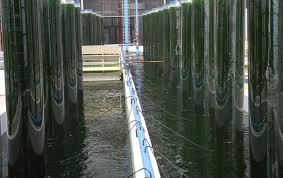
Breaking News
 Watch This If You Want To Grow Your Own Food in 2026
Watch This If You Want To Grow Your Own Food in 2026
 US government admits fault in midair collision that killed 67 near DC
US government admits fault in midair collision that killed 67 near DC
 'Investing in regenerative and organic is not a political stance':
'Investing in regenerative and organic is not a political stance':
 Why Dan Bongino is LEAVING FBI and Trump Admin and Returning to Podcasting...
Why Dan Bongino is LEAVING FBI and Trump Admin and Returning to Podcasting...
Top Tech News
 This tiny dev board is packed with features for ambitious makers
This tiny dev board is packed with features for ambitious makers
 Scientists Discover Gel to Regrow Tooth Enamel
Scientists Discover Gel to Regrow Tooth Enamel
 Vitamin C and Dandelion Root Killing Cancer Cells -- as Former CDC Director Calls for COVID-19...
Vitamin C and Dandelion Root Killing Cancer Cells -- as Former CDC Director Calls for COVID-19...
 Galactic Brain: US firm plans space-based data centers, power grid to challenge China
Galactic Brain: US firm plans space-based data centers, power grid to challenge China
 A microbial cleanup for glyphosate just earned a patent. Here's why that matters
A microbial cleanup for glyphosate just earned a patent. Here's why that matters
 Japan Breaks Internet Speed Record with 5 Million Times Faster Data Transfer
Japan Breaks Internet Speed Record with 5 Million Times Faster Data Transfer
 Advanced Propulsion Resources Part 1 of 2
Advanced Propulsion Resources Part 1 of 2
 PulsarFusion a forward-thinking UK aerospace company, is pushing the boundaries of space travel...
PulsarFusion a forward-thinking UK aerospace company, is pushing the boundaries of space travel...
 Dinky little laser box throws big-screen entertainment from inches away
Dinky little laser box throws big-screen entertainment from inches away
 'World's first' sodium-ion flashlight shines bright even at -40 ºF
'World's first' sodium-ion flashlight shines bright even at -40 ºF
Researchers produce new fuel from coal dust and algae

Made from a combination of algae and coal dust, the latter of which is a waste product, the fuel could have a significant positive impact on the environment.
The NMMU researchers, led by Prof. Ben Zeelie, claim that the new product is a breakthrough in clean-burning fuel. The product uses coal dust as a major component, which is a waste product of the mining process. In fact, as much as 30 percent of coal is lost as dust during mining, and 50 to 60 million tonnes of the material are buried each and every year.
The practice doesn't only pose an environmental risk, with the waste releasing potentially harmful chemicals in the soil over long periods of time, but also represents a huge economic loss. Harnessing coal dust for fuel production eliminates both issues.
To produce the new fuel, the algae is grown in large artificial ponds, before being concentrated and mixed with the coal dust waste. Finally, it's formed into briquettes and dried.



